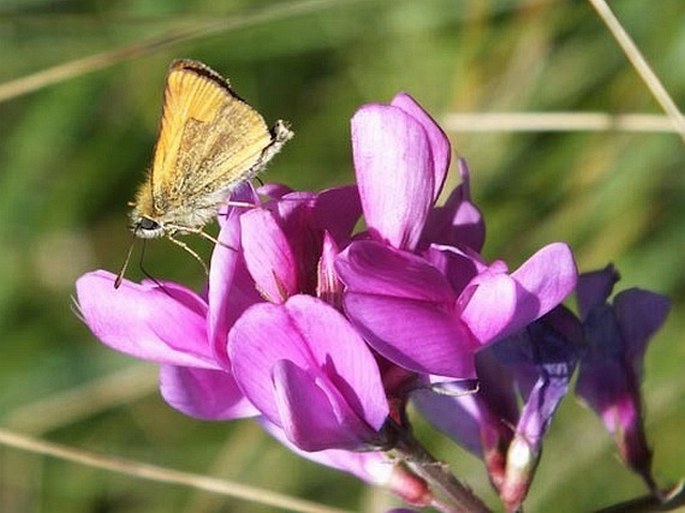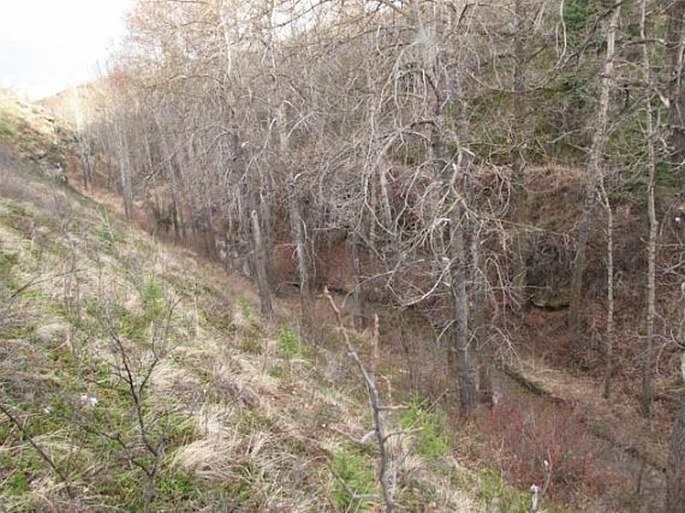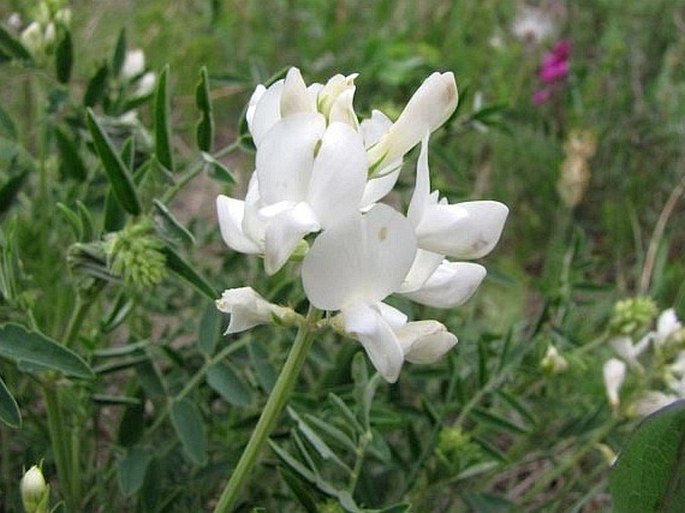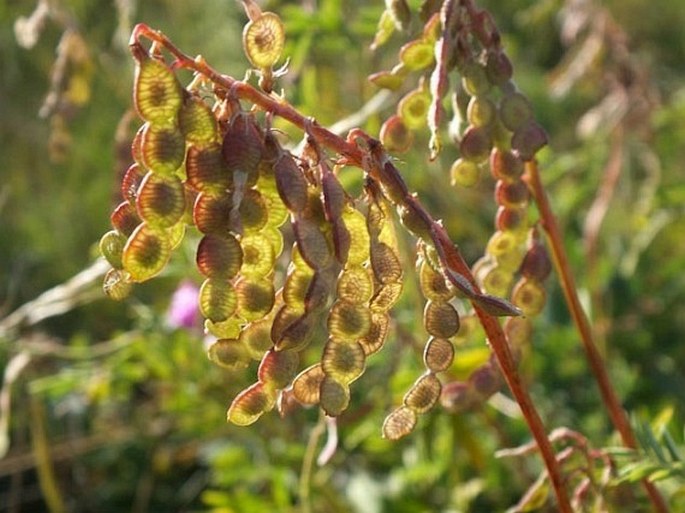Syn.: Hedysarum boreale f. album B. Boivin
Family: Fabaceae Lindl.

Distribution: Northeast Asia (Kamchatka and north of east Siberia) and northern part of North America, from Alaska through almost all of Canada to Arizona and north Texas, with exception of eastern US and California. In the whole area of distribution they are two more subspecies. The nominate one grows in more southern parts of North America, H. b. subsp. mackeziei is found in arctic parts of America and Asia, reaching north Oregon and H. b. subsp. gremiale is found in Utah.
Ecology: Grows in the prairie and tundra, in shrubbery, margins of forests, on heavy and sandy soils and reaches elevation of 2400 m. Blooms from June to August.

Description: Perennial herb, 20–60 cm tall, rising to erect, branched, woody base, dry branches persisting through winter, protecting young growth in the spring. Leaves alternate, pinnately compound, 3–12 cm long, 5–15 leaflets, ovoid to laceolate, 10–40 mm long, 3–14 mm wide. Inflorescence from axils of upper leaves, raceme 5–50 flowers with stalks, calyx bell-shaped, pentamerous, hairy; corolla reddish purple, pink and rarely white, the keel longer than wings (as all Hedysarum). Fruit is a loment (segmented legume), segments 5–8 mm long, 4–7 mm wide.
Note: Hedysarum boreale is on daily menu of all bears. They feed on plants, including fruits and dig for the roots. All parts of the plant are edible to humans, however the seeds are not digestible.




These images were taken in Canada, Alberta, Calgary, Twelve Mile Coulee Natural Environment Park (2013).


